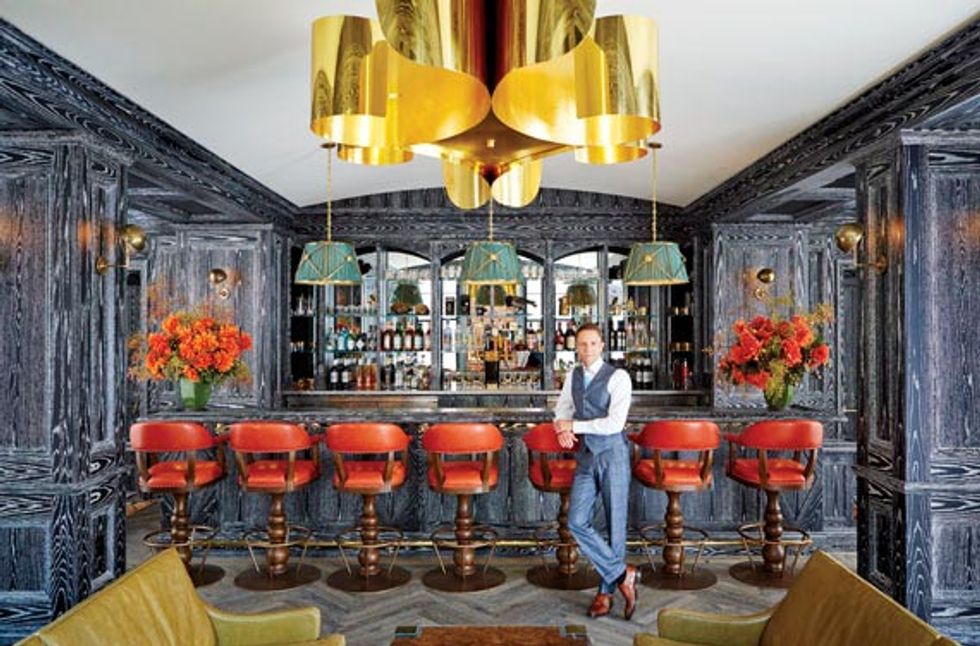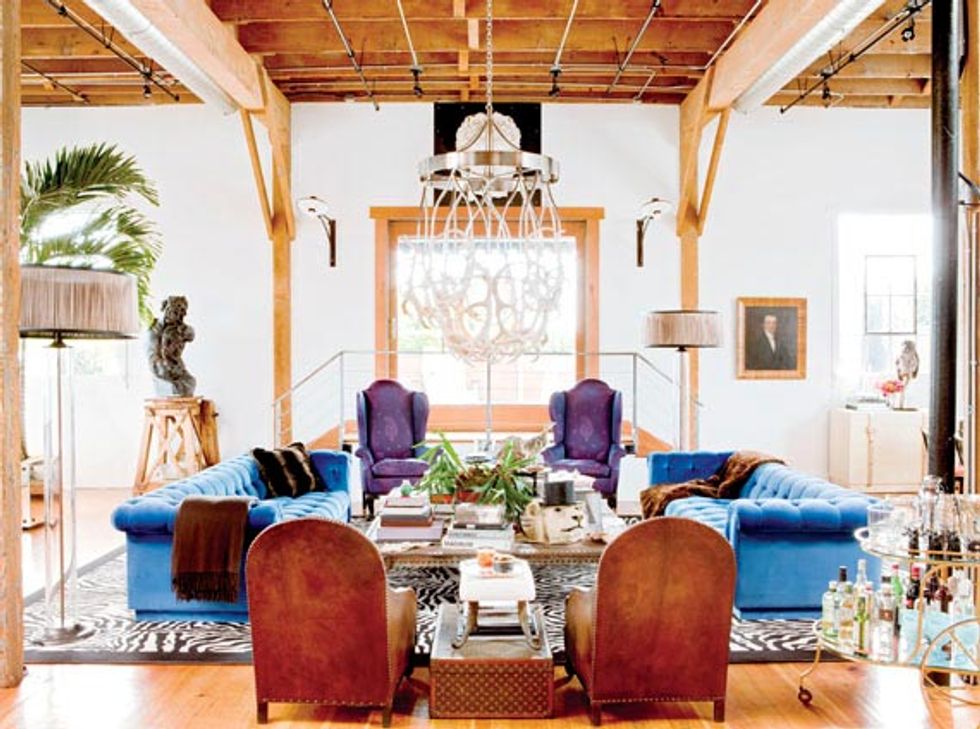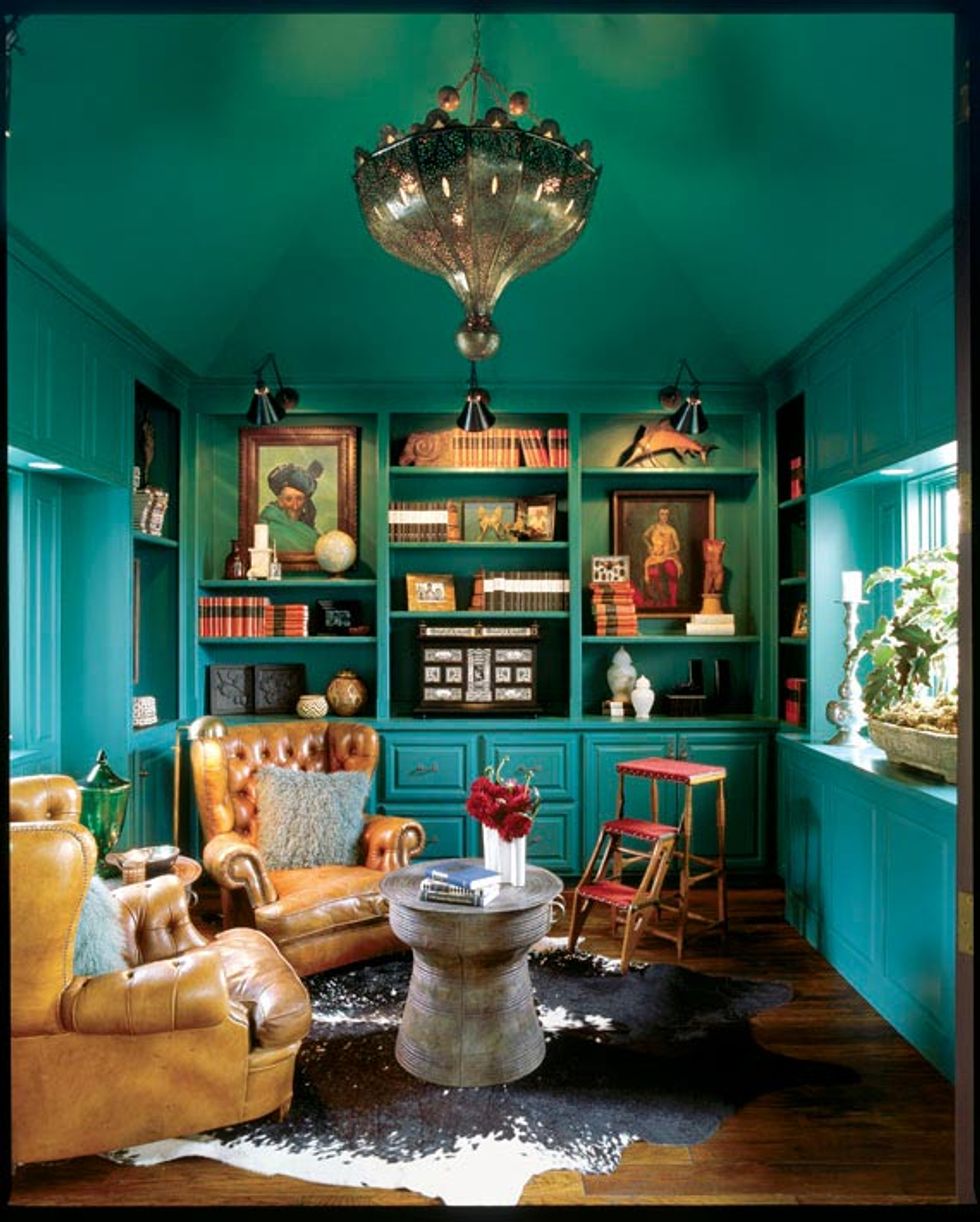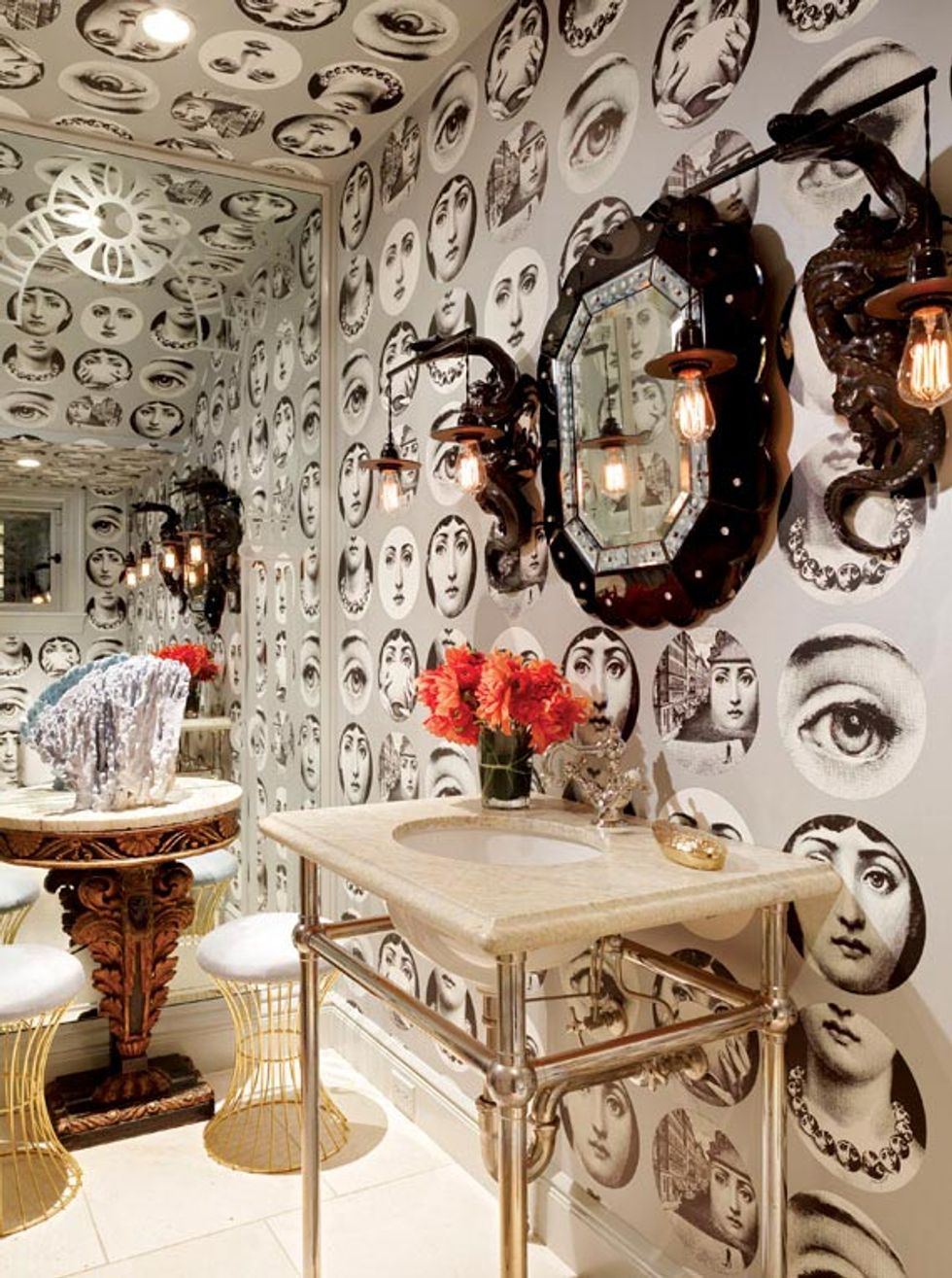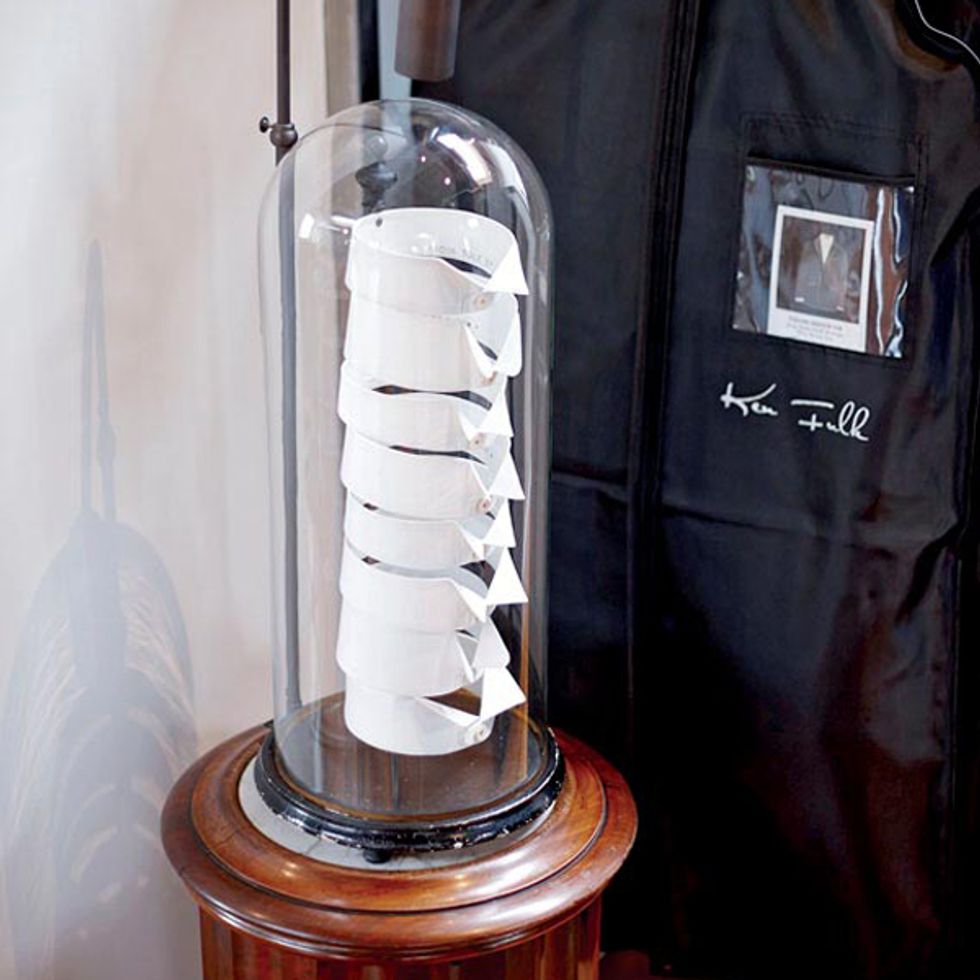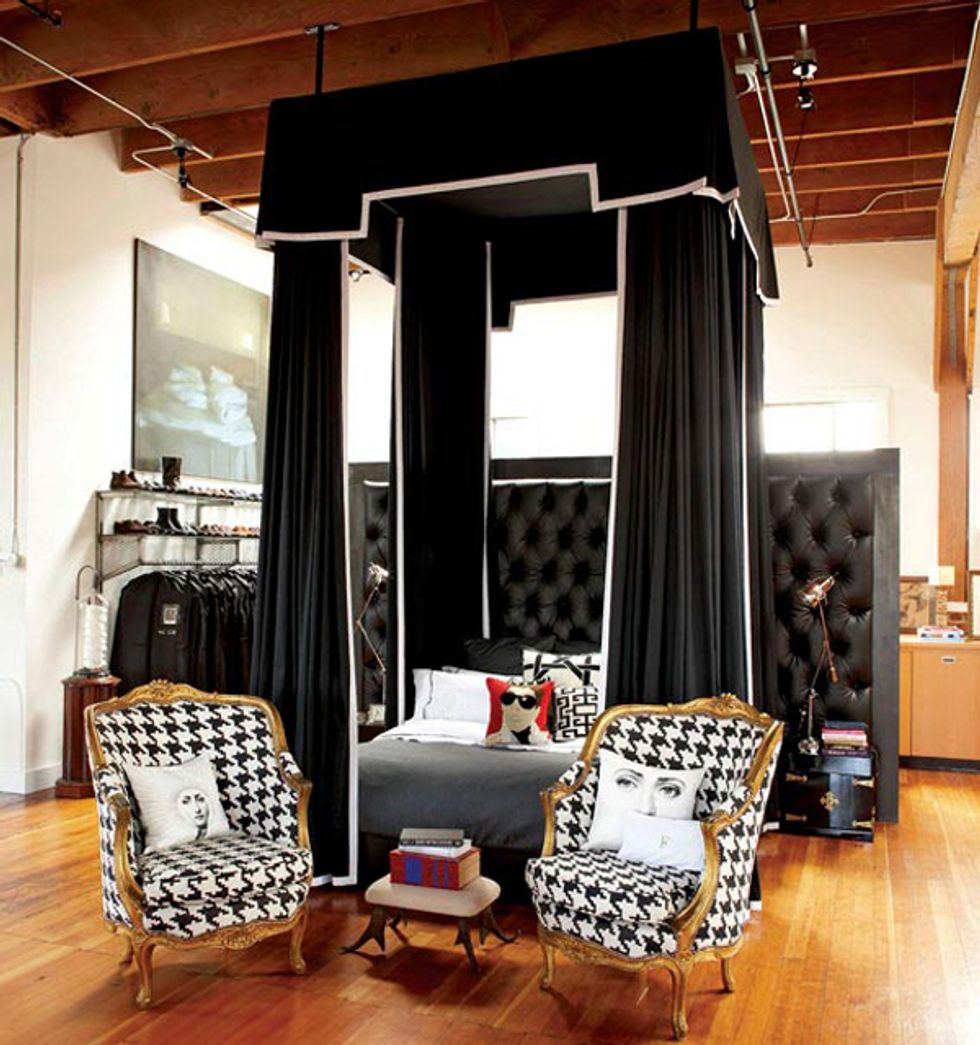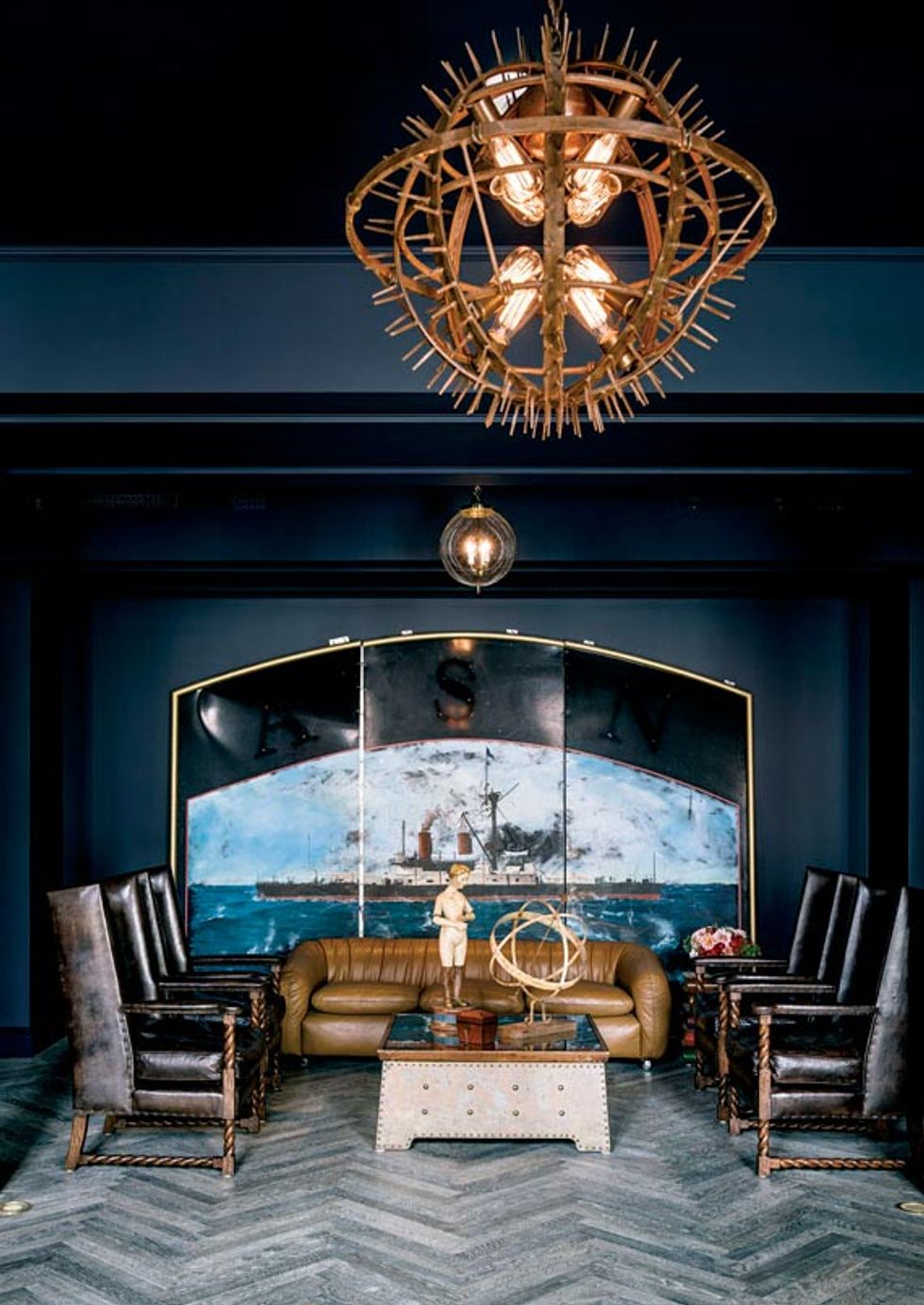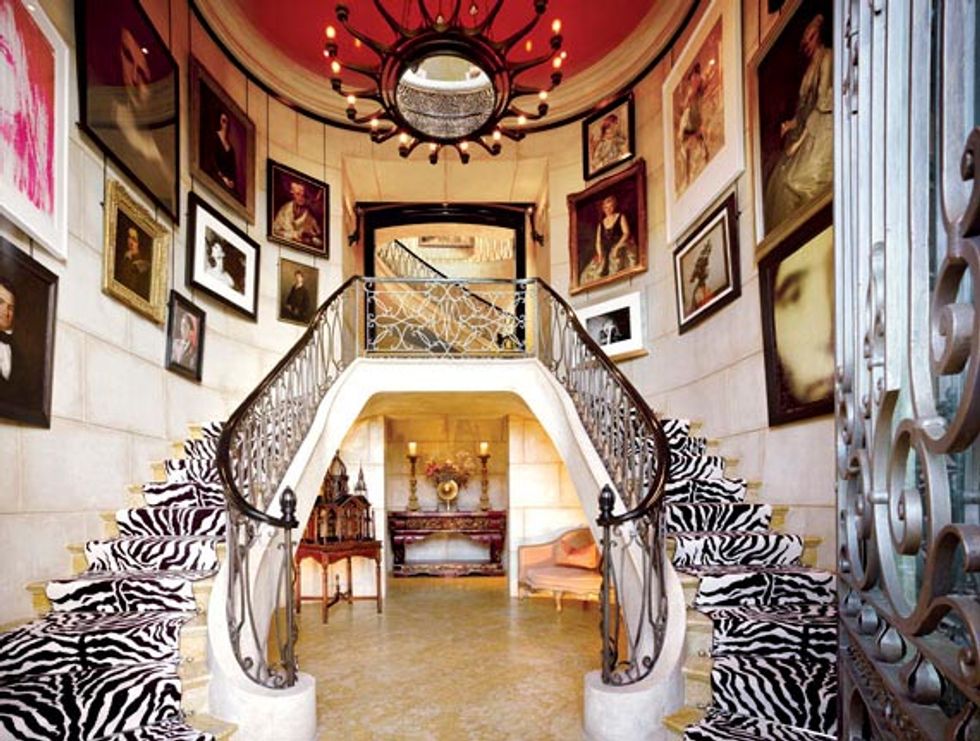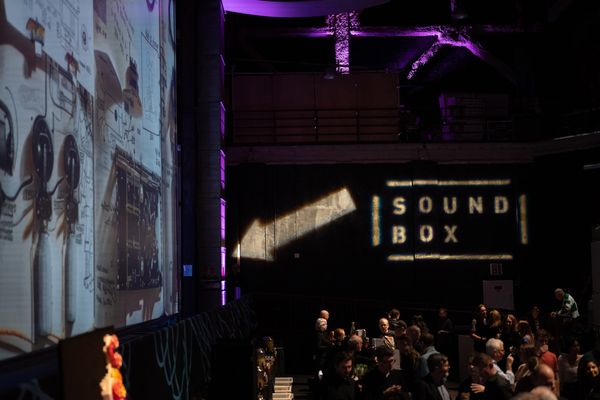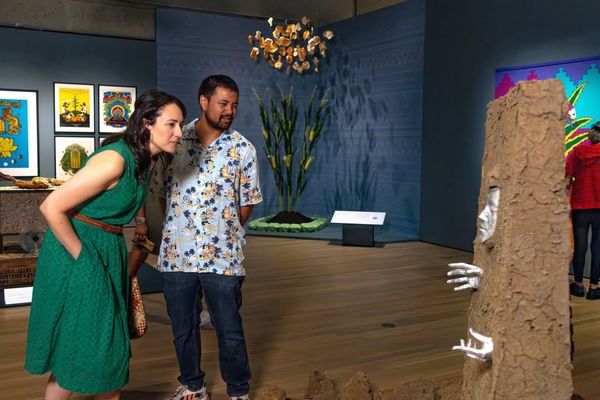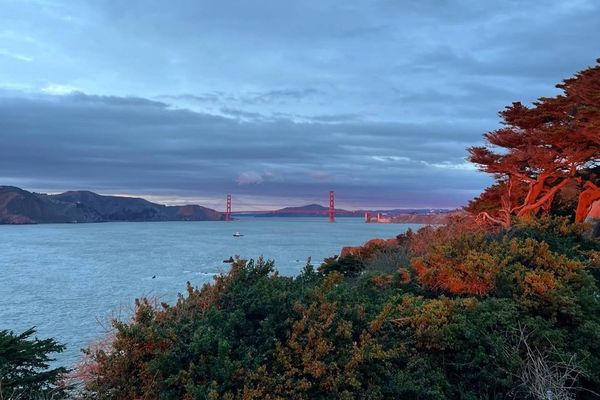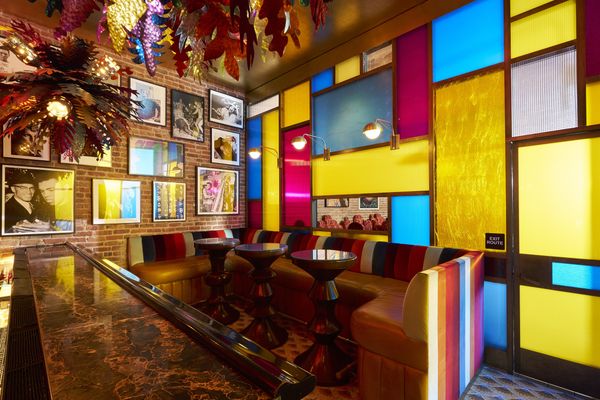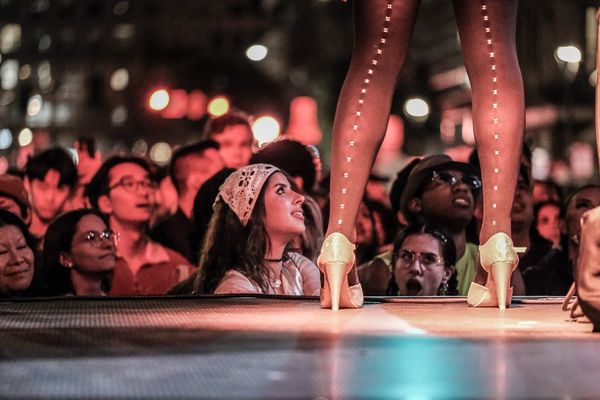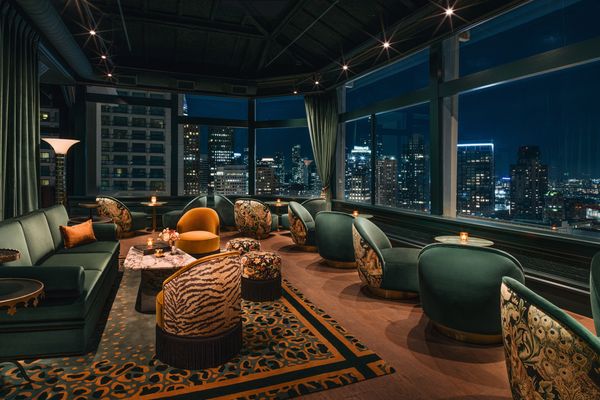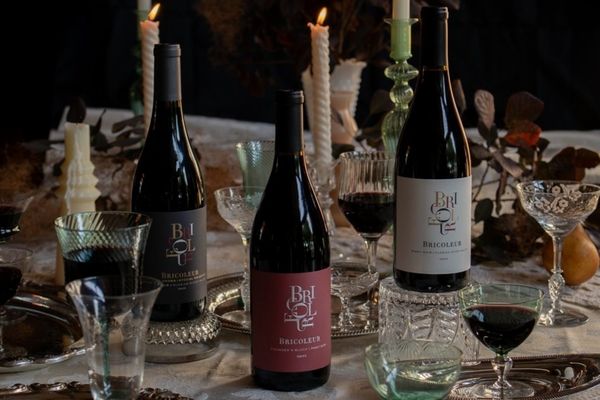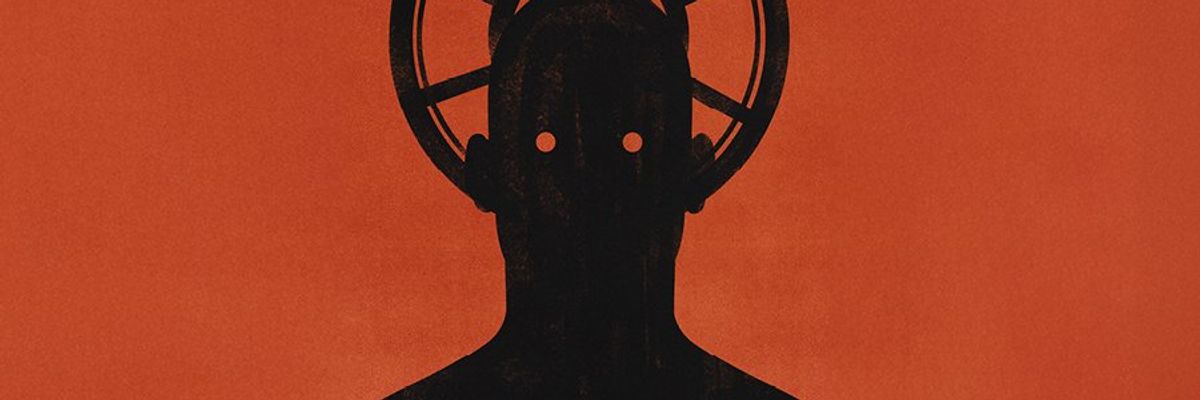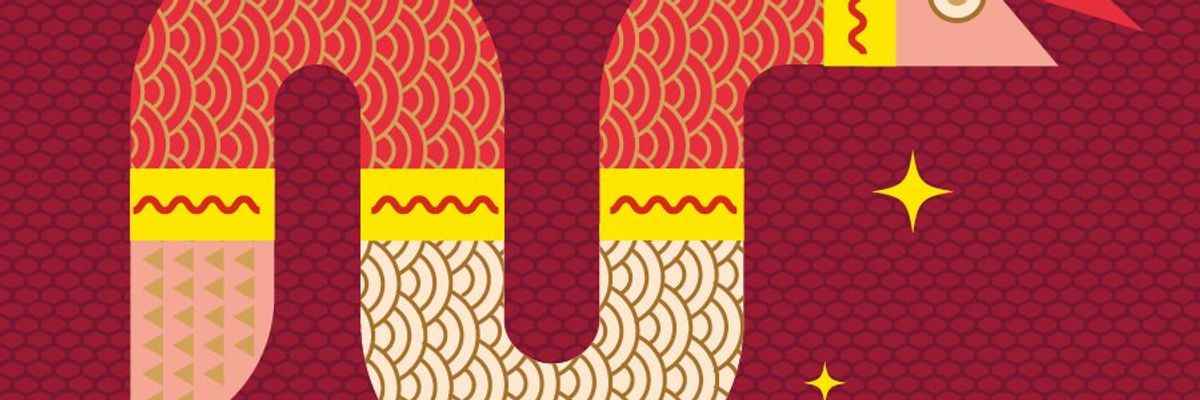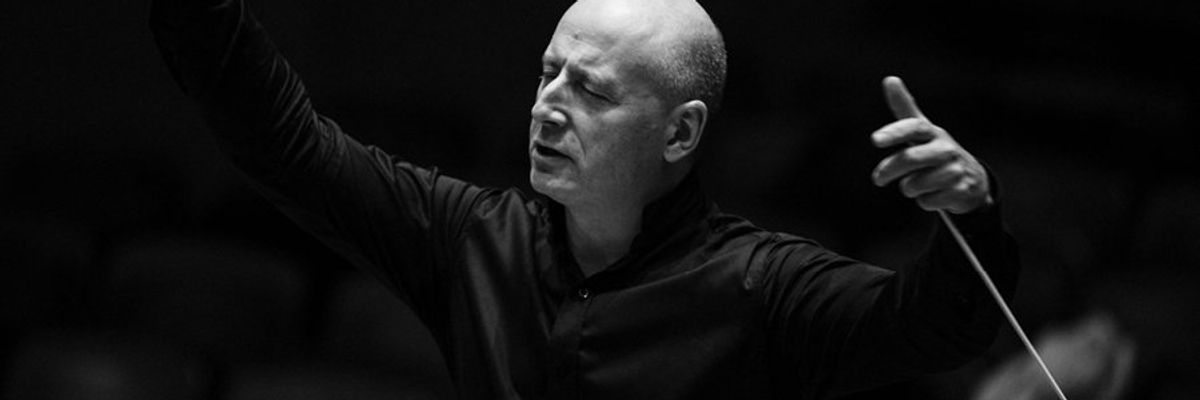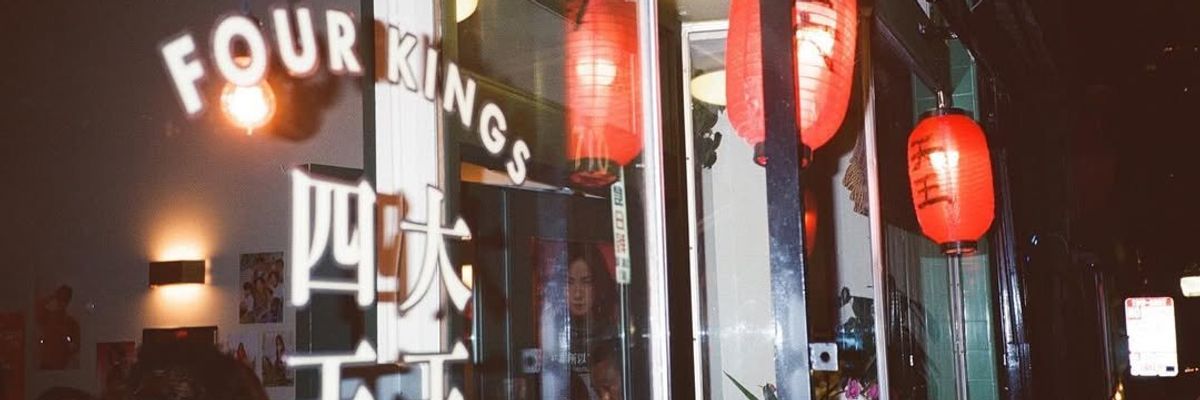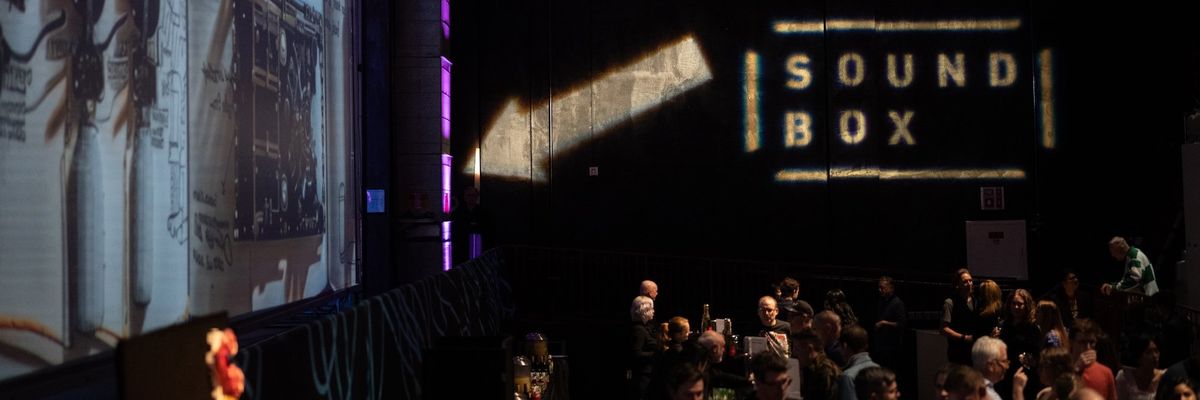On the day of our interview, Ken Fulk texts me before jumping into his black Maserati: “I’m on my way. Sorry I’m late!” He’s rushing from a photo shoot for which he’s dressed in a magician’s get-up, complete with vintage tuxedo tails and a stick-on handlebar mustache. Apparently, he’s been pulling a taxidermy rabbit out of a top hat. While I wait for him in the top-floor loft of his SoMa design studio, I contemplate the glaring metaphor before me.
Over the last decade, Fulk, 48, has proven his god-given wizardry with all things edgy and wondrous. Lately, his flights of fancy—long admired by San Francisco’s high society and the style-challenged digerati alike—seem even more stratospheric than usual. In January, Napster cofounder and former Facebook president Sean Parker hired Fulk to mastermind a party for the members of the 2013 World Economic Forum, in Davos, Switzerland. With just 10 days’ notice, the miracle worker managed to mobilize dozens of taxidermy animals from Paris and rig their eye sockets to shoot lasers—a surreal moment in the post-modern tableau he created within the shell of a cheesy Caribbean bar. (Another Fulkian moment: John Legend tickled the ivories under the watchful eye of a stuffed grizzly bear.) While the designer remains mum on the boldface names actually in attendance, he admits addressing invitations to, oh, Vladimir Putin and Bill Clinton. Just like that, Fulk, a son of the rural South, snagged the elusive attention of world dignitaries.
The magician makes his grand entrance into the loft, still wearing his Thom Browne tuxedo shirt and pants. “Hi, baby,” he says, planting a kiss firmly on my cheek. We’ve known each other for years, way back to when he was a one-man show (he now oversees a staff of almost 40). I can’t help but swoon. Fulk may be gay and proud—he’s married to Kurt Wootton, the same man he picked up in a Boston laundromat 22 years ago, after a misunderstanding about their identical Ralph Lauren towels—but he’s nothing if not devilishly handsome. He pours himself a glass of San Pellegrino and meets my gaze. No time like the present to inquire about his mysterious It factor. After all, you can’t devise a meteoric rise from humble home stager to unofficial arbiter of taste without possessing some kind of unspoken oomph.
Ken Fulk, Inc. now sits in the former SoMa home of a leather-bondage shop. The top-floor loft was once Fulk’s residence.
“I do feel a little like I’m the Chosen One,” he says candidly, but without a shred of arrogance. “I’ve always known there was something different about me that I should feel very lucky to possess.” Even as a young boy growing up in the Virginia countryside, his je ne sais quois was innocently revealed through, say, the simple act of ordering off a restaurant menu (“Anything flambé”), or getting dressed (“I was the six-year-old who instinctively paired shorts with blue blazers”). Later, while attending the University of Mary Washington, where he was president of his class for three years, his magnetism proved irresistible to the opposite sex. “Girls would steal the pockets off my jeans and sneak into my bed all the time.” He reads the surprise on my face. “I’ve kissed tons of girls,” he says. “I was a good maker-outer, but I was never the go-all-the-way guy.”
Luckily, stopping short of the finish line doesn’t translate in Fulk’s business endeavors. Rather, he has leveraged his natural eccentricity and flair for finer things into still-growing career success. Fulk is the guy who shut down Seventh Street so that Stevie Nicks, in all her pagan glory, could perform a 15-song set for his 2012 Rocky Horror-themed Halloween party to benefit ACT’s new Strand Theater. He’s the man who hired burlesque queen Dita Von Teese to strip to her unmentionables at a dinner party to herald fashion designer Jean Paul Gaultier’s exhibition at the de Young Museum. Fulk’s friend and client, Alexis Traina—daughter-in-law of de Young patroness Dede Wilsey—says, “Every detail of Ken’s imagination turns into a rich, sensory
experience for the rest of us.”
Fulk is loved for his daring use of color and pattern. Teal paint coats a private library in Healdsburg (above), while Fornasetti faces make for cheeky wallpaper in the bathroom of a Pac Heights Tudor (below).
It is no wonder that tech magnates such as Nextdoor’s Nirav Tolia and Yelp’s Jeremy Stoppelman keep Fulk on speed dial to plan their monthly CEO dinners, set in rotating manses and whipped up by such local celebrity chefs as Tyler Florence and Gary Danko. In a 2012 New York Times article about Fulk, Traina’s husband Trevor, CEO of IfOnly.com (whose Telegraph Hill offices Fulk designed with a Rear Window theme), encapsulates the designer’s allure like this: “New entrepreneurs have an appetite to learn: They are empire-building. Ken provides an entrée. He has a sense of humor, savoir faire….That’s why he’s the guy a lot of young entrepreneurs look to.”
For Parker’s much-publicized June wedding to singer Alexandra Lenas, Fulk transformed a defunct campground near Big Sur, shaded by old-growth redwoods, into a resplendent vision of Middle Earth. Spellbound, Parker raved about Fulk in a letter to Los Angeles nightclub developers in search of a creative visionary for a top-secret project: Ken is the greatest living genius of design. This will be clear to the world in due time, but for now he is willing to entertain our hair-brained ideas and realize them in a way we could not have imagined.
Unfortunately, the laws of the universe dictate that what goes up must, well, you know. While some proclaim Fulk’s handiwork to be the stuff of legend, virtually securing him a place in the designer hall of fame alongside the late Michael Taylor and John Dickinson, naysayers are quick on the draw. Controversy surrounded Parker’s wedding, for instance, because of a reported beef between the venue, Ventana Inn (which owns the land), and the California Coastal Commission. Despite having consulted with biologists for an earth-minded event, Fulk was nevertheless embroiled in the brouhaha, taking shots from environmentalists who apparently found the event too extravagant for its reverential surrounds.
Personal items like Fulk’s designer suits and shirt collars remain carefully stored in the SoMa loft (above), where his former bed (below) turns into a DJ booth for parties.
When Fulk was featured in the October 2013 issue of Vanity Fair wearing a snazzy kelly-green blazer and white pants, a mob of haters convened on the tech gossip rag, Valleywag, for a spontaneous roast. Among the long string of caustic comments: “I think that ‘style guru’ is after my Lucky Charms” and “Fulk seems like one of the characters out of the story, The Emperor’s New Clothes, trying to sell ‘something’/nothing to very rich, dumb people.” (Poetic justice prevails: The fashion flak directed at Fulk won’t stop Dior Homme from naming him a style ambassador this winter.)
Someone who’s figured out how to “sell” figments of his imagination to power players is bound to have a target on his back. Still, Fulk’s people-pleaser gene, part of his southern DNA, is a dominant one, and keeps his ascent on course. He manifests luxuriously offbeat home interiors and over-the-top parties for the sake of, he claims, joy—not his own, but his clients’. “Relationships matter to me,” he says. “I care about people, period. I can attribute my success to that simple fact.”
“I swear Steven Spielberg is going to call Ken to consult on one of his movies very soon,” says Cornelia Guest, a New York socialite, animal rights activist, and handbag designer who, not too long ago, was the guest of honor at a lavish vegan dinner and book signing party—complete with puppies available for adoption. At the time, Fulk barely knew her, but he extended the hand of friendship in his own extraordinary way. “I call her my ‘sistah,’” he says affectionately.
A vintage metal sign from an East Coast maritime museum sets the scene for The Battery’s Barbary Coast Library, inspired by a well-read ship captain. Walls are swathed in deep navy blue, and the herringbone floor is made of reclaimed wood.
He once feted designer Orlando Diaz-Azcuy, another relative stranger, with a festive gathering, fueled by an empanada station and artisanal Cuba Libres, to celebrate his upcoming monograph. He also introduced another new crony, renowned British fashion illustrator, David Downton, to the SF social scene with an intimate to-do at Ken Fulk, Inc. HQ last year. Their growing friendship took an adventurous turn when Fulk, still a small-town boy at heart, led Downton on an early-morning Jeep tour of grande dame Denise Hale’s sprawling Cloverdale ranch. The Jeep broke down—twice. “We were eventually rescued, but, given another hour, Ken would have fashioned a treehouse worthy of Architectural Digest,” says Downton.
Downton’s not far off the mark—creating something spectacular out of nothing is Fulk’s specialty. Four years ago, when Michael and Xochi Birch, who sold their tech company, Bebo, to AOL for $850 million, tapped Fulk to transform a turn-of-the-century Jackson Square building into The Battery—a private social club for the likes of fringe artists and tech moguls to commingle á la Gertrude Stein’s Parisian salons or the Algonquin Round Table—the designer showed no hint of trepidation, despite his relative inexperience with such major architectural overhauls.
At a prominent client’s Pacific Heights manse, Fulk appointed the dramatic foyer with Starck’s zebra-print carpet and original photography by the likes of Irving Penn. (Photo credit: Matthew Millman)
“President Obama has a note on his desk that reads, ‘Step into the path of lightning,’” says Fulk, in a nod to his style for jumping off a precipice into the wild unknown. “I like being that kind of guy. There is amazing power in saying yes to things you can’t quite wrap your brain around—yet.”
All that remains of The Battery’s 1907 structure is a brick-and-timber shell, but inside you’ll find a Fulkian wonderland: a glass-and-marble penthouse fashioned on Mies van der Rohe’s modernist Barcelona Pavilion; a maritime-themed library awash in a navy-blue shade appropriately called “Moby Dick”; an ultra-VIP room accessed by tugging on the spine of a secret book located just outside its hidden door; a men’s restroom bedecked in erotic wallpaper; and a unisex bathroom with seven stalls that represent each of the deadly sins.
“Ken understands the brand and he’s an expert at creating social experiences,” says Michael Birch, who appointed Fulk creative director of The Battery. “By bringing together a spectrum of individuals all striving to do interesting things, amazing outcomes can happen.”
Indeed, the city’s unique cross-section of humanity seems to fuel Fulk’s imagination. “Where else can bluebloods hang out with leather queens?” he laughs. In 2010, when he purchased his Clarendon Heights home, a “Japanese-inspired hunting lodge” designed by architect Warren Callister, he was drawn to its location on one of SF’s highest streets. “San Francisco feels like Oz from up here,” says Fulk. “Or Whoville, depending on how you look at it.”
In a letter to Fulk, the midcentury home’s previous owner, an octogenarian spitfire, signed off with an unwittingly meaningful portent, which couldn’t have been better timed had the magician pulled it out of a hat himself: “Welcome to the top of San Francisco.”
This article was published in 7x7's November issue. Click here to subscribe.



